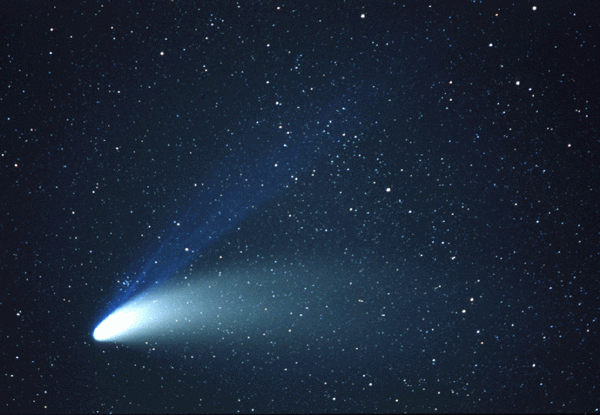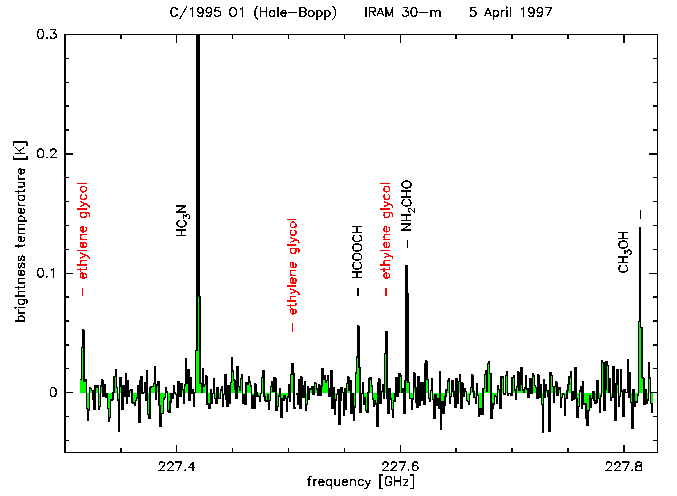
The apparition of comet Hale-Bopp in 1997, an exceptionally bright comet, was an opportunity to discover many new cometary molecules, from radio and infrared spectroscopic observations
A further study of its radio spectra just resulted in the identification of another molecule, ethylene glycol. Ethylene glycol, whose chemical formula is HOCH2CH2OH, is a diol (i.e., this molecule has two alcohol functions). It is commonly used as antifreeze in coolant fluids for car engines. It was recently identified in interstellar clouds in the Galactic Centre. One of the spectra observed at IRAM showing three lines of ethylene glycol and lines of other organic molecules.

Ethylene glycol was identified from about ten lines in spectra of comet Hale-Bopp observed in spring 1997 with the radio telescopes of the Institut de Radioastronomie Millimétrique (IRAM) (30-m radio telescope in Spain and Plateau de Bure interferometer in the French Alps) and the Caltech Submillimeter Observatory (CSO) (10-m radio telescope at Hawaii). From the same set of spectra, seven new molecules were previously identified, including formic acid (HCOOH), formamide (NH2CHO), methyl formate (HCOOCH3) and acetaldehyde (CH3CHO). The identification of ethylene glycol was possible only after the frequencies of the radio lines of this molecule were accurately known, from laboratory measurements and theoretical modelling.With ten atoms, ethylene glycol is now the most complex molecule identified in cometary atmospheres. Indeed, the space exploration of Halley’s comet indicated the presence of complex molecules composed of carbon, hydrogen, oxygen and nitrogen, especially in the organic mantles coating cometary dust particles. But their very nature could not be precised. Observations show that there are almost three molecules of ethylene glycol for one thousand molecules of water. Among organic molecules made of carbon, hydrogen and oxygen, ethylene glycol is the most abundant after methyl alcohol (CH3OH) and formaldehyde (H2CO). This suggests that still more complex species could be present in a significant amount.This discovery conforts the analogy between interstellar matter and cometary material, which could have formed following similar processes. Ethylene glycol and all other cometary molecules are indeed present in interstellar ices or in the hot molecular cores of interstellar clouds.When impacting the early Earth at a sustained rate, comets could have brought many constituants : part of the oceans’ water, but also complex organic molecules, whose presence in comets is attested by ethylene glycol. This seeding could have played a crucial role in the origin of life.This work was done by J. Crovisier, D. Bockelée-Morvan, N. Biver, P. Colom (LESIA, Observatoire de Paris), D. Despois (Observatoire de Bordeaux) and D.C. Lis (Californian Institute of Technology, USA).

